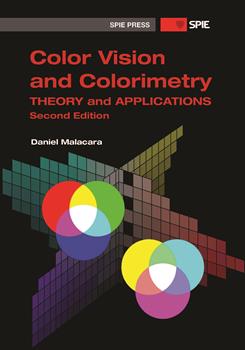|
Electromagnetic waves can have many different wavelengths and frequencies in a range known as the electromagnetic spectrum, as illustrated in Fig. 1.1. Light is a narrow range of electromagnetic waves that the eye can detect. Different wavelengths of light produce different perceptions of color. The longest wavelengths produce the perception of red, while the shortest ones produce the perception of violet. The spectrum in the visible, ultraviolet (UV), and infrared (IR) regions is classified in Table 1.1. Humans have been quite interested in color for many centuries. However, the scientific beginning of color studies goes back only to Newton when he performed his classic experiment with a prism, as shown in Fig. 1.2, and as detailed in Section 1.2. The sensation of color is produced by the physical stimulation of the light detectors - known as cones - in the human retina. The color spectrum produced by an ideal prism or a diffraction grating is formed by a display of all of the spectrally pure or monochromatic colors. Each color has a different wavelength. The wavelength values corresponding to each color in the spectrum produced by a prism are quite nonlinear. The diffraction grating produces a more linear spectrum. For illustration purposes we will represent the spectrum with a linear chromatic dispersion, as illustrated in Fig. 1.3. Different spectrally pure colors are said to have different hues. |
|
|


